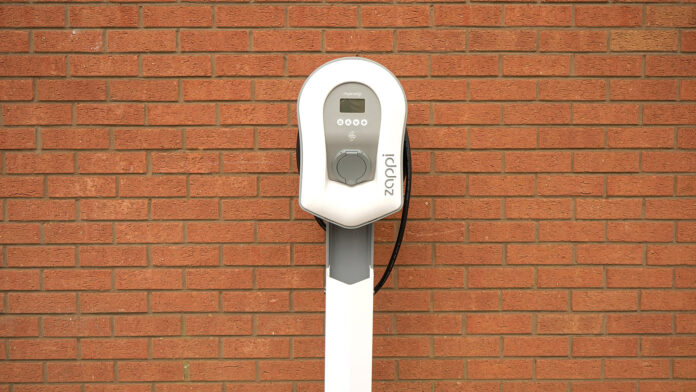Jan Wiśniewski
Agrowing number of electric vehicles on Polish roads leads to a more and more troubling challenge of providing charging solutions in blocks of flats. Noticing the drivers’ expectations, the Polish Alternative Fuels Association (PSPA) and Volkswagen Group Polska developed a guide book on how to install a charging station for residents of multi-family units and mangers of such properties.
According to the Electromobility Meter maintained by PSPA and PZPM there were 13,057 electrified vehicles on Polish roads ate the end of July 2020 (BEV i PHEV). EV drivers could use 1,224 publically accessible charging stations. In the coming years, mostly as a consequence of narrowing the gap in the price of electric vehicles and combustion vehicles, the number of BEVs and PHEVs will grow. Relying on the data collected by PSPA in the Polish EV Outlook 2020, we may expect as many as 440,000 EVs on Polish roads in 2025. At the same time, according to the 2019/2020 Barometer of New Mobility 28% of surveyed Poles declare they will consider buying an electrified vehicle in the coming years (3 year perspective) after learning the market offering in that respect. Most of the survey respondents live in blocks of flats (58.9%). The Barometer also reveals that as many as 92% of EV users in Poland would like to charge their cars at home.
Further development of e-mobility will inevitably place a great challenge for property managers and residents – how to optimally design the principles of using charging infrastructure in multi-family units. Such principles should reflect the interests of EV drivers on one hand and non-EV drivers on the other. Moreover, the procedure for installing charging stations in residential buildings is fairly new and naturally leads to a number of concerns, especially about how to interpret current regulations.
In an effort to speed up and facilitate the process of installing and using charging stations in multi-family units, PSPA developed professional guidebooks which describe the procedure in a step-by-step manner.
The partner of both publications – “Guidebook for Residents” and “Guidebook for Property Managers” – is Volkswagen Group Polska. The publication developed by PSPA includes a simplified model of installing a private charging station, soon-to-come changes in the regulations and a detailed analysis of the current state of law.
It is possible to install a private charging infrastructure for EVs in both single-family units and in multi-family units, however, in the latter case it calls for more consulting and arranging efforts to obtain necessary permits and maintain good neighbor relations. PSPA guidebook clarifies that the first step in installing a charging station is to verify whether there are technical conditions to do so. It is , then, necessary to consult the local power provider or verify the parameters of the connection to the grid as specified in the private contract. By building standards, in regular cases, it is not required to obtain a building permit or notify relevant administration bodies to install a private charging station. At the same time, unlike in the case of publically accessible stations, private infrastructure does not require acceptance to operate given by the Office of Technical Inspection after certain tests are performed.
These lower regulatory requirements are not meant to say that installing a private charging station only calls for checking the technical parameters and securing the necessary conditions of power supply in the contract. What you can learn from the PSPA guidebook is that an integral part of the procedure is to seek consent of all the other residents of the residential community or the property manager. Moreover, you need to agree on fair use of energy used for charging an EV. The best way to go, to enjoy charging your EV in the underground or outdoor carpark conveniently, is to make prior arrangements on the principles of charging that will be satisfactory for both the EV owner and the other residents.
It is the board of the housing community and the property manager that play an important role in agreeing these principles. Their decisions guarantee a sense of security and fairness in settling accounts within the community of EV drivers, ICE drivers and residents without cars. From a perspective of a property manager, providing residents with charging options appears as a new kind of requirement in multi-family housing and this trend is likely to intensify with a growing number of EV registrations.
Many property managers facing the installation of a charging station will need to learn all the relevant procedures from all angles. The guidebooks prepared by PSPA are intended to facilitate their active engagement in playing what might become key role in helping e-mobility develop and in meeting residents’ expectations. Both publications will, on one hand, help go through the installation procedure and on the other hand they may offer necessary support in dealing with possible arguments concerning the use of charging stations and settling accounts for the energy consumed.
Both “Guidebook for Residents” and “Guidebook for Property Managers” are available for free download from the website of the Polish Alternative Fuels Association.








